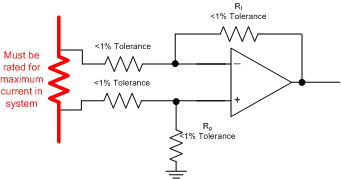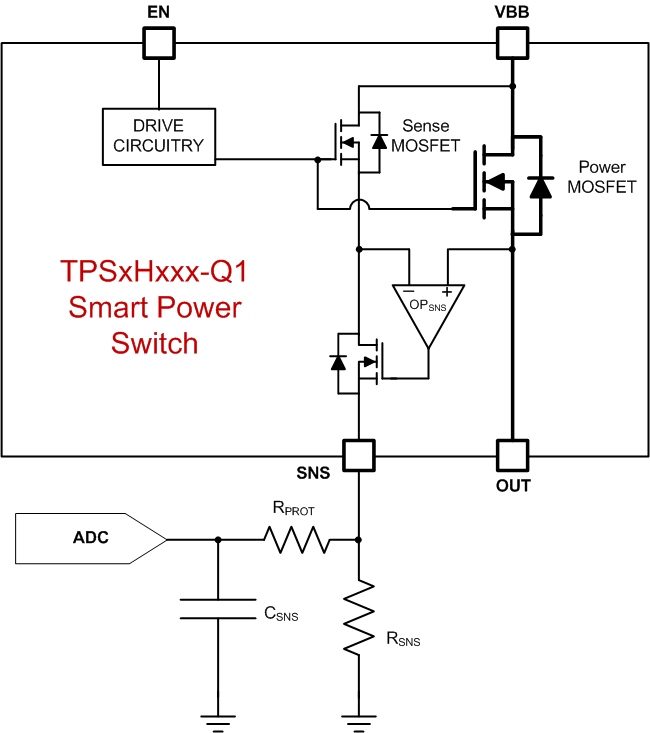SLVAE30E February 2021 – March 2021 TPS1H000-Q1 , TPS1H100-Q1 , TPS1H200A-Q1 , TPS1HA08-Q1 , TPS25200-Q1 , TPS27S100 , TPS2H000-Q1 , TPS2H160-Q1 , TPS2HB16-Q1 , TPS2HB35-Q1 , TPS2HB50-Q1 , TPS4H000-Q1 , TPS4H160-Q1
- Trademarks
- 1Introduction
- 2Driving Resistive Loads
- 3Driving Capacitive Loads
- 4Driving Inductive Loads
- 5Driving LED Loads
- 6Appendix
- 7References
- 8Revision History
2.3.1 Accurate Current Sensing
Most smart high side switches have a feature called current sensing that will measure the current going through the switch. This section will go through that functionality and why having it in a smart high side switch is better than discretely measuring the current.
As explained in the application section, the current flowing through the switch will be directly proportional to the temperature in the load. This means that to have a closed loop circuit where the current is being monitored and adjusted back there needs to be very low error in current measurement. Typically if the designer wants to use a load switch they will have to introduce a discrete circuit or more components to get the current to be properly measured and relayed back to the central microcontroller.
When it comes to current measurement there are many different parts that can contribute to inaccuracies in the real system. The discrete way of measuring current is using a sensing resistor and making a differential amplifier out of four resistors and an operational amplifier. In this configuration each component in the system has to have a very tight tolerance of typically less than 1%. This is to reduce the overall inaccuracy of the current sense, however comes at the expense of drastically increasing the board layout space. Additionally, the sense resistor adds more series impedance lowering the maximum amount of current in the system.
 Figure 2-2 Discrete Current Measurement Implementation
Figure 2-2 Discrete Current Measurement ImplementationTI's portfolio of high side switches have very high current sense accuracy standard on most devices. For instance, TPS1H100-Q1 has ±3% accuracy at loads ≥1A. Not only does it reduce the number of components needed in the system, it also provides less error for knowing the exact current flow through the system.
 Figure 2-3 TPSxHxxx Current Sense Circuit
Figure 2-3 TPSxHxxx Current Sense CircuitFigure 2-3 shows the internal circuitry used for the current sensing in TI's high side switch family of devices. Having the current sense integrated to the high side switch reduces the number of components in a system while still maintaining a high accuracy.